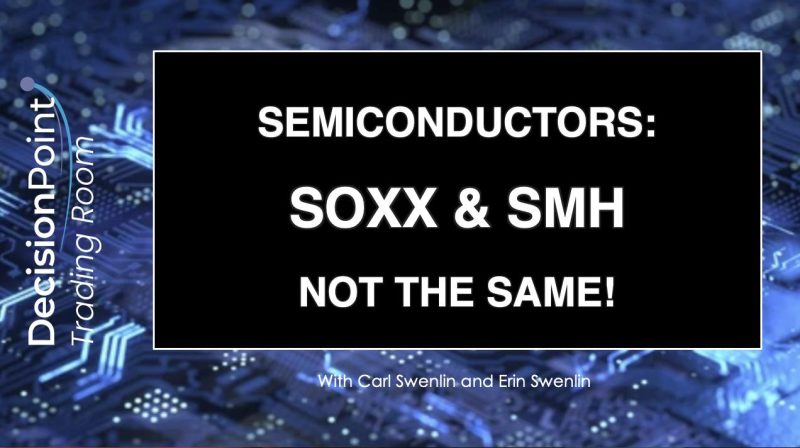
DP Trading Room Showdown: SOXX vs. SMH – Demystifying the Differences in Semiconductors
The world of trading and investments can be a complex and daunting place, especially for those just starting to delve into the realm of the stock market. One area that often confuses new traders is the distinction between different exchange-traded funds (ETFs), particularly in sectors like semiconductors. In this article, we will explore the differences between the two popular ETFs, iShares PHLX Semiconductor ETF (SOXX) and VanEck Vectors Semiconductor ETF (SMH), and shed light on why they are not the same.
**SOXX vs. SMH: Understanding the Basics**
To begin, it is crucial to grasp the fundamental differences between SOXX and SMH. SOXX, managed by iShares, tracks the PHLX SOX Semiconductor Sector Index and aims to provide exposure to U.S. companies that design, manufacture, and distribute semiconductor chips. On the other hand, SMH, operated by VanEck Vectors, follows the MVIS US Listed Semiconductor 25 Index and focuses on global companies involved in semiconductor production and equipment.
**Portfolio Composition**
One of the primary distinctions between SOXX and SMH lies in their portfolio composition. While both ETFs target semiconductor companies, their holdings may vary significantly. SOXX generally includes larger-cap companies with a heavier weighting towards giants like Intel and NVIDIA. In contrast, SMH offers a more diversified approach by encompassing a broader range of global semiconductor players, such as Taiwan Semiconductor Manufacturing Company (TSMC) and Applied Materials.
**Performance and Risk**
When considering ETFs for investment, performance and risk are critical factors to analyze. SOXX, with its concentration on U.S. semiconductor firms, may be more susceptible to domestic market fluctuations and regulatory changes. Conversely, the global exposure of SMH could potentially offer greater diversification benefits and mitigate risks associated with a single geographic region.
**Expense Ratios and Liquidity**
Investors should also pay attention to expense ratios and liquidity when comparing ETFs. SOXX and SMH both have similar expense ratios, but liquidity levels can vary. SOXX tends to have higher average daily trading volumes than SMH, which may influence the ease of buying and selling shares, particularly for those trading in large quantities.
**Conclusion**
In conclusion, while both SOXX and SMH focus on the semiconductor sector, they are not interchangeable due to differences in portfolio composition, performance, risk exposure, expense ratios, and liquidity. Understanding these distinctions is crucial for investors looking to capitalize on the opportunities presented by the semiconductor industry. By conducting thorough research and considering their individual investment goals, traders can make informed decisions when choosing between SOXX and SMH, ultimately enhancing their portfolio diversification and potential returns in the dynamic world of ETF trading.
